Folders |
Kyle Merber talks about the pursuit of winning Wanamaker mile 10 years after winning the high school race at NYRR Millrose GamesPublished by
Millrose, Merber and the New York Minute: A decade after his high school breakthrough, Kyle Merber pursues a Wanamaker Win By Dave Devine of DyeStat “Each runner worries the others. The anxiety of being pressed and jostled increases; soon it will become too much for someone, and he will make an effort to break away from the field. It is this controlled tension about to break down that gives miling its great excitement.” - Sir Roger Bannister, Sports Illustrated, 1994 “There was a lot of jostling and everyone was constantly fighting for position, but as my coach had told me, I just needed to stay in contact…At one point, with about four laps to go, I felt a quick moment of self-doubt; I thought the pain was becoming unbearable.” - Kyle Merber, 2008 Road to Millrose journal “And now Merber has taken the lead— the New Yorker!” - Lewis Johnson, NBC broadcast, 2008 Millrose Games
Kyle Merber jogs lightly under the stands at Madison Square Garden. He’s 17 years old, a senior at Half Hollow Hills West High. As a native New Yorker, a kid from Long Island, he’s been here plenty of times before, but on every previous visit he’s gazed down on the arena floor to find a hockey rink or a basketball court— Rangers or Knicks. Maybe a circus or a concert stage. But tonight, the self-described track nerd peers down the concourse walkways, through the gaps in the stadium scaffolding, blinks past the overwhelming arena lights, and sees a track. A beautiful, historic, 11-laps-to-the-mile oval. Even the sight of the Mondo surface sets his heart beating faster. He’s run on plenty of tracks before, but never this one. Never at Millrose, where you have to be invited, where the high school milers compete in the same meet as the professionals. And now, deep in the bowels of this venerable arena, he’s preparing for that race. Maybe the biggest race of his young life.
He agreed to participate in the blog — called the Road to Millrose — before he’d even qualified for the meet, which seemed like a reach, possibly hubristic, but it worked out. Lots of things have worked out this season. He’s put in the miles and pursued his goals and taken care of the small things. All the stretches and striders and nutritional choices. The habits that provide the advantages someone needs in order to qualify for a race like this. Years from now, when he thinks about himself at this age, he’ll say he was “the kid reading Once a Runner and Running with the Buffaloes, doing 50 push-ups before bed every night, calculating splits during class. The quintessential, obsessed, high school running nerd.” That’s Kyle Merber at 17. He had run in another invitational mile a week earlier in Massachusetts, the Reebok Boston Indoor Games. There, he found himself in the most competitive high school field he’d ever faced, dropped a three-second PR, and didn’t come close to winning, but the highlight might have been meeting Australian distance star Craig Mottram. Kyle and some of the other high schoolers called Mottram’s room at the event hotel, got his autograph and peppered him with questions. And now, in the cramped warm-up room at the Garden, there’s Mottram again. Bernard Lagat and Nick Willis and Galen Rupp. All of them, somehow more human and more imposing in person. Kyle observes their routines, absorbs their preparations, admires their kits, covets their spikes. Files away the small things. The manner in which these stars ready themselves for the same 11-lap contest he’ll be running against fellow teenagers. In a few minutes, he and the other prep invitees will burst into the glare of the lights. Kyle will bounce through a quick lap on the track, finding his friends and family in the crowd, hearing the hometown cheers, the shouts of G2G4GOLD! aimed at the kid from The Playground. The only kid from New York. When the gun goes off, he’ll block out everything — the noise and the fans and the rumble of the feet on the track — and focus on staying in contact. He’ll handle the elbows and cover the moves and notice the pain and keep an eye on Robby Andrews and his notorious kick. He’ll make a bid for glory with two laps to go, and hope it sticks. On the homestretch, he’ll sense daylight and dig deeper. Lanky legs in full stride. Crowd thundering to its feet. Steps from the line, his face will be all joy. The celebration, poster-ready. An expression caught between a gasp and a grin. Arms spread wide, finish tape about to be reduced to tatters, fingers pointing to the cheap seats, the nose bleeds, the rafters. Letting all the hometown fans know what place their boy is about to finish. In this race. In New York. On national television.
On the NBC broadcast, Lewis Johnson will exclaim, “And what a moment for Kyle Merber, the only New Yorker in the race. And he’s able to come through the last 400 with a great kick and drop Robby Andrews for the Millrose win!” Kyle will stagger in a half circle, extend his palms in salute to the roaring fans, allow his forearms to fall languidly over his head. Still struggling to comprehend his accomplishment. “I crossed the line,” he’ll note in his final entry for the DyeStat journal, “and just looked around in disbelief. I looked into the crowd and I saw a ton of people yelling and clapping. I was in complete euphoria and I just put my hands on my head, wondering to myself, ‘What did I just do?’” * * * Kyle Merber is doubled over, reeling, on a high school track in Kodiak, Alaska. It’s mid-September, and he’s just finished a well-beaten fourth in a one-mile race that will mark the last of his 2017 campaign. It’s the second of two four-lappers orchestrated by his friend, Trevor Dunbar, in Dunbar’s home state of Alaska. Merber claimed the opening race, three days prior in Anchorage, to become the first person to record a sub-4 mile outdoors in the 49th state. In that wind-battered event, staged before an enthusiastic crowd of perhaps 1,000 fans huddled onto football bleachers, Merber had whipped past Ben Blankenship and New Jersey-New York Track Club teammate Colby Alexander to record the 3:59.36 victory. This contest, on Dunbar’s high school home track in Kodiak, has ended on a less positive note. In a steady drizzle, with temperatures plunging below 50-degrees, Merber had nothing left when the real racing started with a lap to go, and watched with admitted ambivalence as Blankenship drew clear of the entire field. Now, he’s hunched and gasping at the stinging air, hands pressed into spent, frozen legs. It’s the final act of an up-and-down outdoor campaign, carved into an oval at what feels like the edge of the map. Disappointment would be understandable. Frustration, expected. But when the gathered competitors hear Blankenship’s winning time — 3:57.85 — it’s satisfaction and pride that surges up. While Merber’s time in the first race had been the first outdoor sub-4, Blankenship’s mark constituted a state record — an Alaska soil record — topping the 3:58.3 Jack Bolas ran in 2013 on an oversized, 413-meter indoor track. “Crossing the finish line,” Merber says, “and hearing that Ben broke the state record, it was still — I felt like I was still a part of it, and that we did what we were supposed to do. Which is unique, because obviously at a U.S. championship or something, you don’t necessarily care how anyone else does besides yourself.” These two races — this trip to Alaska — had been about as far from a U.S. championship meet as the geographic distance suggests. It hadn’t been about prize money or appearance fees. It hadn’t been about PRs or national record attempts presented in prudently managed conditions. It had been about competitors, at the end of their season, squeezing in two more races for a friend. About respect, and running fast. “We took advantage of where we were in the calendar,” Merber says, “to do something different, and cool, and to just keep the sport simple and promote it in a place where they probably don’t get to see something like that very often.” A bunch of guys racing, as Merber says, for bragging rights. “Like, legitimate bragging rights. That night at dinner. Giving each other a hard time and joking about the race, all in good fun, and then you turn around and Ben wins the second race and he’s giving it right back.” They bunked together in a house, not a hotel. Went fishing and off-roading together. Spun easy miles in the shadow of coastal mountains. Shake-out runs past fishing trawlers and floatplanes. “Competitors in most sports would be shocked to see the dynamic we had,” Merber acknowledges, “because it kind of goes against most ideas of what competition is, and what sport is supposed to be about. But then, the aspect of what running is about — sport aside — the camaraderie, and the challenging oneself, and pushing the limits, I feel it really captured that aspect of what we do.” Frozen limbs aside, not a bad way to conclude a busy racing year. The offseason calendar promises a different kind of busy. In October, Merber and his fiancée, Patricia Barry, will be married in Ireland. There will be a honeymoon in Switzerland. Two more out-of-town weddings to attend. Training runs and conditioning and team practices, wedged in around all that travel. An effort to connect the dots between the exposed, wind-whipped curves of this Kodiak track and the tight turns of the upcoming, undercover campaign. The next time he spikes up for a race, it will be 4,500 miles from this Alaskan outpost, in New York City for the 111th NYRR Millrose Games and the prestigious Wanamaker Mile. * * * Kyle Merber is running intervals with his NJ-NY clubmates. Another high school track. This one in Florida — the Maclay School, 10 miles north of Tallahassee. It’s the team’s third year arranging a winter training camp on the Panhandle, a welcome respite from the arctic conditions that typically barrel into New York this time of year. Not everyone is here. Mostly, it’s the guys whose mileage tends toward the upper end. Merber is among that group, prepping for his 2018 opener. He and his coach, 80-year-old legend Frank “Gags” Gagliano, had discussed the possibility of a rust buster at a meet in Alabama several weeks before Millrose, but scratched that plan when they weighed the time in the car and disruption of a race against the uninterrupted, steady flow of work happening on the track at Maclay. “I probably would have preferred to have one tune-up race,” Merber allows, “but workouts have been going well. So — as we had hoped — I was able to replicate those [race] efforts down here.” The day he departed for the long Florida road trip, Merber fired off a tweet to his 12,700+ Twitter followers:
It was classic Merber: witty, self-aware, meta — the sense of a deeper truth wrapped in a protective coating of self-deprecation. Plenty of track observers would contend that, with a personal mile best of 3:52.22, two relay world records, and an American collegiate record in the 1,500, Merber is better than “just pretty good.” He doesn’t exactly see it that way. “I do feel like I’ve started to prove myself, longevity-wise,” he says. “I feel like I’ve been a consistent name on the circuit for a while now, but I don’t think I’ve been as high up, necessarily, as I’ve wanted or would dream. I’m happy with the fact that I’m always in it, but I’m not happy with the fact that I’m not always winning.” At the age of 27, he knows he’s outlasted many of his peers. He’s aware of the sheer difficulty of carving out a career in a sport that’s chronically underfunded and underexposed. But he also doesn’t live in the past, or believe in coasting on prior laurels. “Right now, I would say I’m pretty good. I think I’ve shown the potential that I have the ability, but I need to continue to work to actualize it.” He has a healthy appreciation for how quickly the marquee names in any athletic endeavor — perhaps especially track and field — can be swept to the edges of memory. How today’s blockbuster field can become tomorrow’s historical minutia.
When he thinks back to that teenager at the Garden, the kid barreling off the final turn to Millrose glory, it’s the motivation, more than the moment, that lingers. “I definitely executed,” Merber says now, “and did everything I needed to do that day, but the biggest takeaway was being able to run in front of so many people, and seeing so many pros, and saying, ‘This is what I want to do.’ It was the first time I sort of got a taste of the life that I’m living now.” More than a high school victory, that 2008 Millrose win became a window to the next level. A curtain pulled back on the possible. “It was more or less what made me be able to visualize coming back 10 years later and still running at the NYRR Millrose Games — but in the premier event.” That premier event, of course, is the Wanamaker Mile. No one has ever been crowned high school Millrose champion and returned to win the Wanamaker. Merber has come closest, his 3:54.67 third-place finish last year just over a second behind Eric Jenkins 3:53.23 winner. But if the prospect of closing the Millrose circle with a double win remains intriguing, Merber is more focused on what it would mean to be twice victorious at an event that is essentially a home game. “Winning Millrose in high school was a really big deal as a New Yorker, and winning Millrose as a professional — as a New Yorker, again — would be a really big deal.” He points out that while many U.S. athletes describe how at home they feel in the Armory, how much they love coming to New York and running there, “it’s truly our home. That’s where we practice, that’s where we work out. I live 10 miles up the road from the Armory, and I’ve been running there since I was a kid.” He admits there have been times he’s been too focused on the hometown factor. Races he’s contested in New York when he allowed high expectations and frenzied fans to derail the effort. He knows he competes best when he’s relaxed and receptive, allowing the race to come to him, regardless of the zip code. And yet… The Wanamaker Mile, Merber says, “is something I’ve known about, been aware of for so long, obviously something I’ve thought about for so long, that being successful there — ” He pauses for a moment, wrestling with the words. The difficulty of articulating the value of that win. Not an Olympic team. Not a national title. But something else, harder to encompass. Something ephemeral, connected with what it means to be from somewhere. Something closer, perhaps, to bragging rights. “It would mean I’m doing it justice,” Merber says, picking up the thread. “It would mean I’m doing the thing that Kyle of 10 years ago would have hoped he could do…If I get to 1,400 meters and I hear the bell and I’m still in the race, then I just have to hope that I find it — those final, thirtysome seconds.” If everything turns out the way he hopes — and even if it doesn’t — he expects there will be another gathering around another table, not in Alaska this time, but in Coogan’s, the renowned and recently saved Washington Heights mainstay down the street from the Armory. There will be drinks and laughter, surely. Smack talk and old stories. Competitors giving each other a hard time, joking about the race, forgetting the pain of it. Appreciating what it means to be young and fit and fast. |

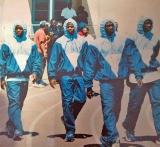







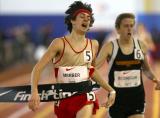
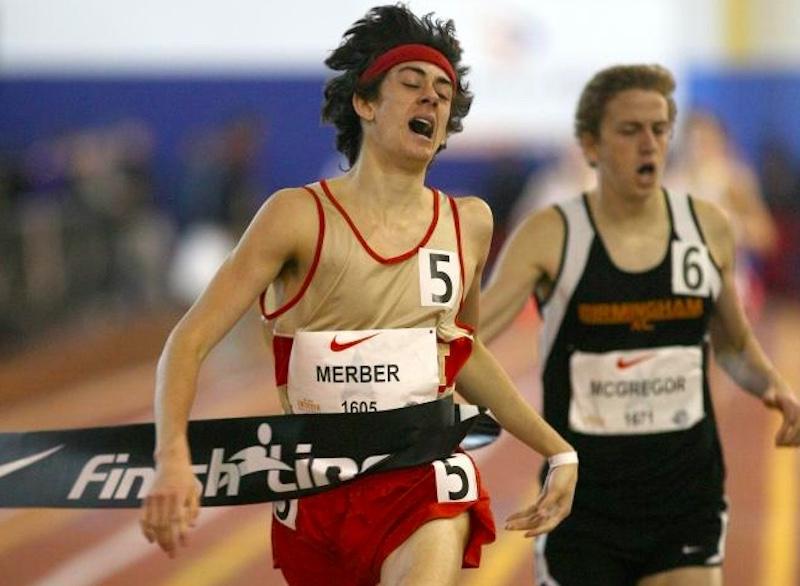 He's been keeping a journal of his preparation for DyeStat.com, a Web site where — if he’s honest — he probably spends too much time, especially on the message board known as The Playground, where he goes by the handle: g2g4gold.
He's been keeping a journal of his preparation for DyeStat.com, a Web site where — if he’s honest — he probably spends too much time, especially on the message board known as The Playground, where he goes by the handle: g2g4gold.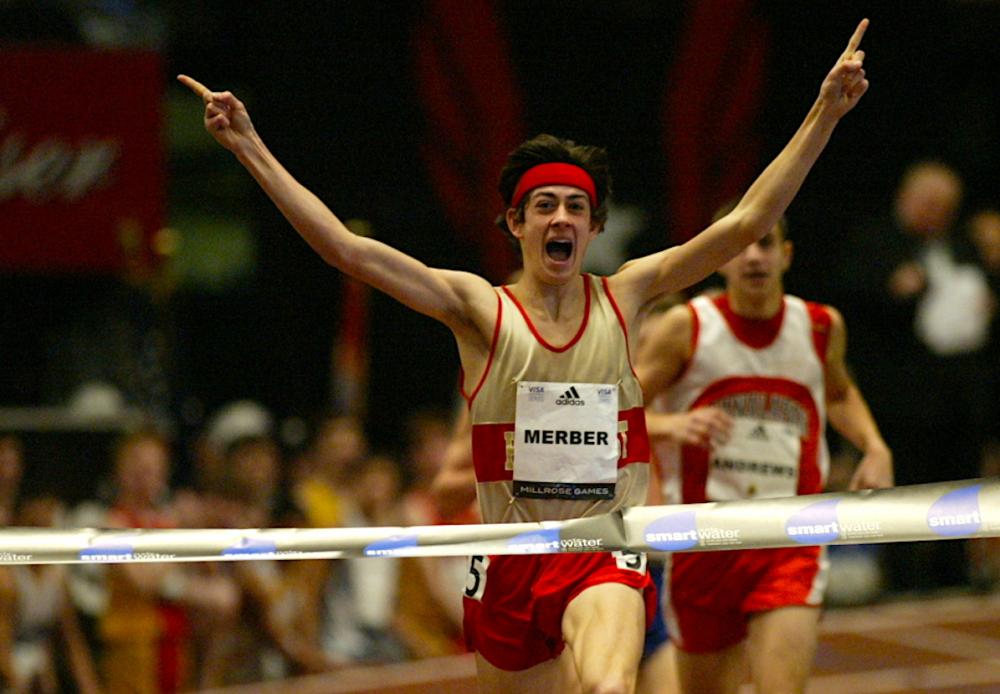

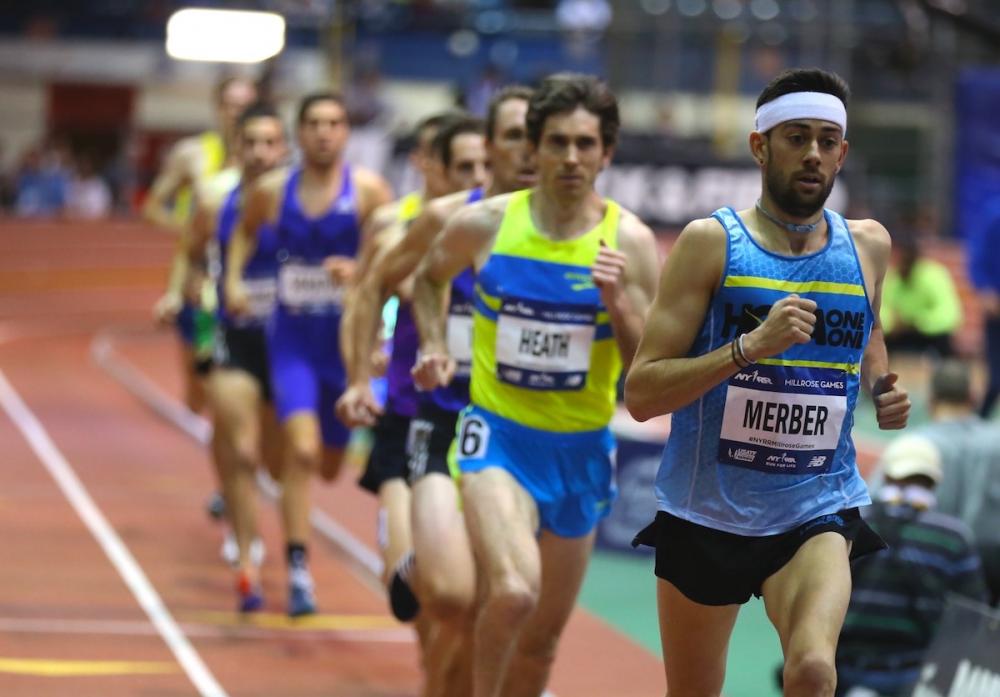 “It’s humbling when you look back at the history books,” he says, “and you see all these guys who’ve run just as fast, or faster, than I have, and I don’t even — I don’t know who they are. It’s an unforgiving sport. People get forgotten very quickly if you don’t leave an impression.”
“It’s humbling when you look back at the history books,” he says, “and you see all these guys who’ve run just as fast, or faster, than I have, and I don’t even — I don’t know who they are. It’s an unforgiving sport. People get forgotten very quickly if you don’t leave an impression.”